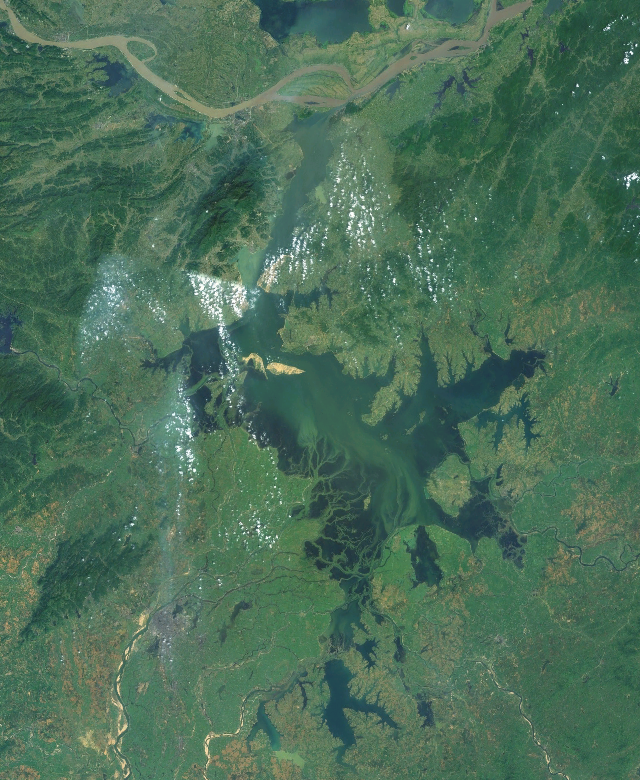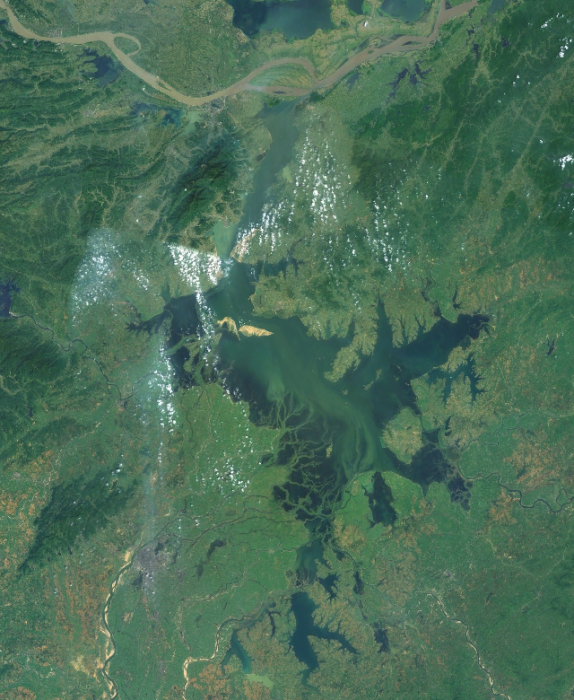Pollution, Dry Weather Choke the World’s Major Lakes
Urban waste and falling water levels signaled a rough start to 2012 for some of the world’s largest and most iconic freshwater lakes.
Dry weather and pollution are plaguing some of the major lakes in China, Africa, South and North America at the start of the year, posing threats to regional water supplies, fishing, transportation and natural ecosystems.
Drought
A prolonged drought in southeastern China has almost desiccated Poyang Lake, the country’s biggest freshwater lake, the state-run Xinhua news agency reported, citing the Jiangxi provincial hydrographic bureau. The lack of rainfall in regions upstream of the lake, where precipitation in 2011 was 21 percent lower than average, has reduced the flow of the five rivers that feed into Poyang. Earlier this year, the Ganjiang River fell to record low 12.35 meters (40.5 feet). To make matters worse, a slew of new construction projects could be filling in parts of Poyang Lake during the low-water season.
Changing rain patterns are also steadily draining Lake Victoria, the world’s second largest lake by area and a source of the Nile River. Ports along the lake’s shores are struggling to accommodate the large shipping vessels that transport people and cargo between African communities. Some quays have lost as much as 5 meters (16.4 feet) of anchorage depth, and increasingly erratic rainfall linked to climate change will likely make the problem worse.
Mild Winter
In North America, high temperatures and a lack of snow and ice could push the Great Lakes water levels down. The region experienced near record rainfall in 2011, but by December temperatures were higher than average, threatening to offset the gains, according a six-month forecast released in December by the U.S. Army Corps of Engineers. Though lake levels are currently much higher than last year, they will likely drop 5 to 18 centimeters (2 to 7 inches) below 2011 levels by summer if the mild weather continues.
Lake Mead, which straddles the Arizona-Nevada border, is also suffering from a lackluster winter. The region saw virtually no snowfall in January, prompting forecasters to scale back their water supply predictions by 3 billion cubic meters (792.5 billion gallons) — enough to meet current demand levels in the Las Vegas Valley for a decade. While last year’s record snow bolstered the lake, dry winters could force valley communities — which get 90 percent of their water from the Colorado River via Lake Mead — to seek out other sources.
Pollution
Meanwhile, rapid urbanization in El Alto, Bolivia, is threatening Lake Titicaca, the world’s highest navigable lake. The booming city, which has grown 4 percent a year for the past two decades, is dumping raw sewage, garbage and industrial waste into the rivers that feed Lake Titicaca, posing challenges to fishermen and farmers trying to water their livestock, the Guardian reported. The lake also receives treated wastewater from the El Alto’s severely overtaxed treatment plant.
Sources: AlertNet, China.org, The Detroit News, Guardian, Las Vegas Review-Journal, Xinhua
A news correspondent for Circle of Blue based out of Hawaii. She writes The Stream, Circle of Blue’s daily digest of international water news trends. Her interests include food security, ecology and the Great Lakes.
Contact Codi Kozacek








As long as the EPA does not demand the correction of an essential water pollution test, that caused the failure of the Clean Water Act and stop using open waters as urinals, water quality will only deteriorate and that only because nobody wants to admit that they do not understand this essential test.